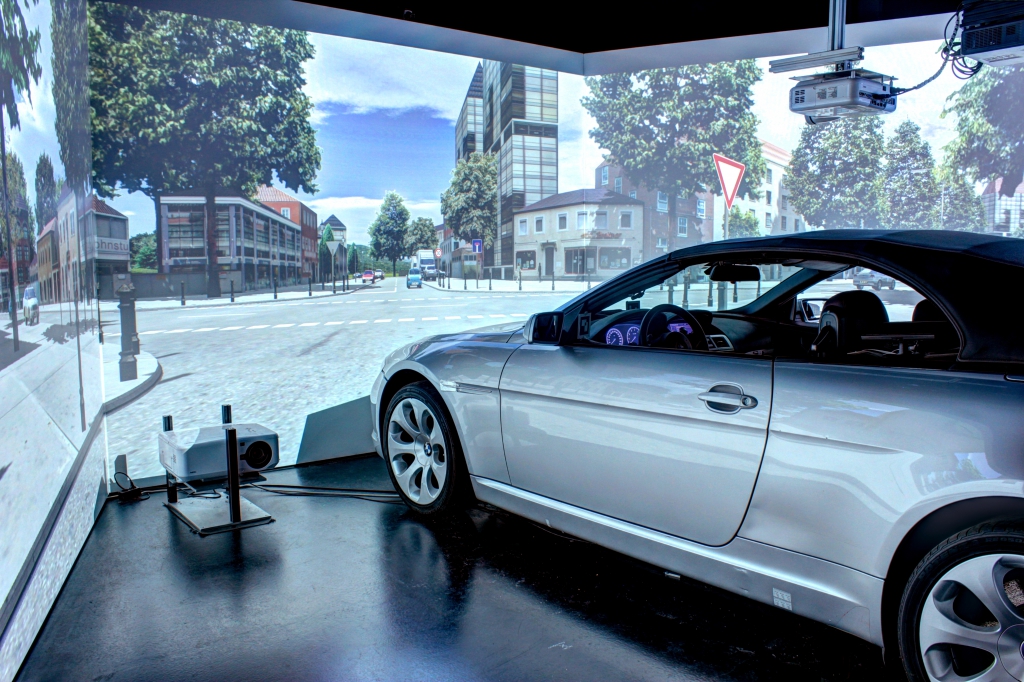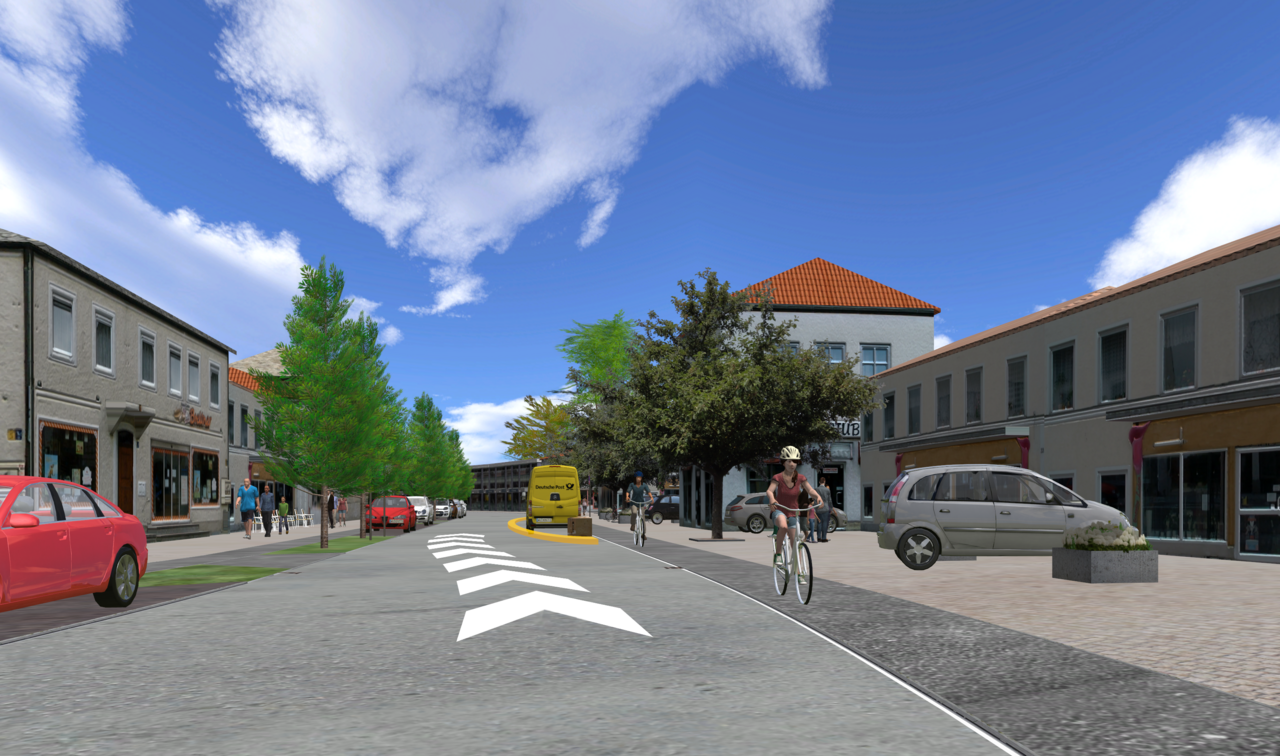Static Driving Simulator
The Chair of Ergonomics owns and uses a static driving simulator for tests and experiments. Research targets are safeguarding of functions as well as research on driving behavior. A BMW chassis of the 6 series is used as a basis. The software SILAB of the WIVW is used for simulating the scenarios and the environment.

Projection System
A high-quality 6-channel projection system provides a realistic driving environment. Three projectors are used for the front and back view each. The front field of view is approx. 180°. The back view through the mirrors is realised through three seperate canvases. A 6-channel sound simulation completes the driving simulation.

Mock-Up

The development and research of human-machine-interfaces in vehicles is one of the central scopes at the Chair of Ergonomics. Experimenters can freely program two screens which replace the instrument cluster and the central information display. This helps fast and easy implementation of new display systems. In addition, a freely programmable head-up display is available. An active gas pedal, developed by Continental, is integrated in the mock-up as well. Driver observation is made possible by an eye-tracking system from SmartEye, which includes three permanently installed infrared cameras.
Driver Assistance Systems & Automation
A fully functional driving automation, which takes over the longitudinal lateral driving task from the driver, is implemented in the driving simulator. Furthermore, single driver assistance systems like a lane keeping assistant can be realized due to the independent controllability of the steering wheel rotation. This is used among others by the research group Cooperative Systems and Automation.

Driving Simulator Software SILAB

A flexible simulation software and open driver-vehicle interfaces are prerequisites for successful research with the driving simulator. For this purpose the driving simulation software SILAB of the WIVWis used at the chair. SILAB offers great flexibility concerning the design of experimental tracks as well as broad possibilities to define amount and behavior of road users. In addition an open design of interfaces is possible, enabling connections to external systems (i.e. Eye-Tracking).
Applications
The driving simulator of the Chair of Ergonomics was or is used among others in the following projects:
- Alternative Bedienkonzepte
- @City
- Bestimmungsgemäßer Gebrauch beim hochautomatisierten Fahren
- CADJapanGermany: HF
- IMAGinE
- Informationsanzeigekonzept zur Verfügbarkeit automatisierter Fahrfunktionen
- Gebrauchstauglichkeit-MultiLabStudie
- Vom Menschen lernen - für Menschen gestalten